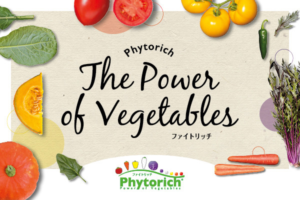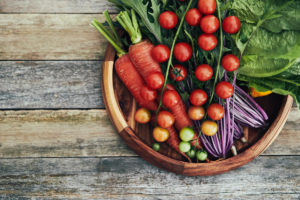Takii Europe launches Phytorich, a premium vegetable concept packed with powerful phytonutrients, at Fruit Logistica 2020
Future consumers will attach far more importance to health and well-being food products over the coming years (IGD) [1]. In anticipation of this latest food trend, Takii is to launch its Phytorich concept, a new premium range of flavourful vegetables, full of phytonutrients. The launch will target key European players in the food sector, at the Fruit Logistica event, to be held from 5-7 February 2020 in Berlin.
“Under the slogan `The power of vegetables’, we are excited to introduce Phytorich tasty vegetables containing exceptionally high levels of healthful phytonutrients. We are also working on science-based data to prove the positive health impact of certain varieties with high phytonutrients”, said Harm Custers, Head of Marketing at Takii Europe.
25 years of experience in phytonutrients
Longevity and healthy habits have long been at the top of consumers´ minds in Japan and the Phytorich concept has successfully built on this approach since its launch in Japan [2], 25 years ago. The Japanese breeding company Takii has consistently dedicated its efforts to research in this area, while excluding genetic engineering from its breeding techniques, and has consequently become a pioneer in the world of phytonutrients in vegetables.
Phytonutrients = natural health
Scientific experts have identified over 25,000 thousand phytonutrients in plant food, of which thousands are contained in fruits & vegetables.[3] Phytonutrients are natural compounds that help protect plants from insects and diseases, but their protective qualities can be just as beneficial to human health. Phytonutrients help you maintain your health and protect your body from diseases, illness, even ageing. “We believe Phytorich vegetables can offer a new solution for nutritional gaps as an alternative food supplement”, says Custers. Phytorich functional vegetables have a distinctive phytonutritional profile that does not change the quality and taste of vegetables.
The flagship variety of the Phytorich concept is called Goshiso PR-7 tomato and is part of an extensive assortment composed of other vegetables such as onion, carrot, squash, collard, mizuna, okra, spinach, Chinese cabbage and pepper.
Goshiso PR-7 tomato
Tomatoes are the richest natural source of the carotenoid lycopene. Besides giving tomatoes their red or pink colour, lycopene also helps your body to fight free radicals: small chemical elements that can damage your cells, causing ageing and illness. Goshiso PR-7 tomato from Takii contains twice as much lycopene as regular tomatoes. The richness of lycopene goes hand in hand with a very high level of glutamic acid, a compound that triggers the characteristic “Umami” taste of Goshiso PR-7.
Science-based products
According to a clinical trial unveiled by the Hokkaido Information University in Japan[4], the tomato Goshiso PR-7 variety is rich in lycopene, while the intake of semidried tomato benefits cardiovascular health by lowering the level of LDL (bad) cholesterol in the blood. As a result of the trial, the Gochiso PR-7 tomato is allowed to claim health benefits in Japan, making it the only science-based tomato in the world.
In Europe, Takii is collaborating in a project entitled “The value of vegetables and fruits”[5] to evaluate and define methods measuring the impact of phytonutrients on health, together with business, institutions and governments. The goal of this initiative is to work on innovations in the sustainable production of healthy and safe food in a healthy and green environment.
More information is available at www.phytorich.eu
Or contact:
Rogier Laurens
Sr. Portfolio Manager
Mobile : +31 (0)6-22 50 83 46
rla@takii.eu


[1] IGD is a market research company
[2] According to the World Health Organisation (WHO) Japanese women have a life expectancy of 87 – the highest in the world, while male life expectancy is in the top ten internationally, ahead of the US and UK.
[3] Deanna M. Minich “A Review of the Science of Colorful, Plant-Based Food and Practical Strategies for “Eating the Rainbow””, Hindawi, Journal of Nutrition and Metabolism, Vol. 2019, Art. ID 2125070. https://doi.org/10.1155/2019/2125070 referring to M. H. Carlsen, B. L. Halvorsen, K. Holte et al., “The total antioxidant content of more than 3,100 foods, beverages, spices, herbs and supplements used worldwide,” Nutrition Journal, vol. 9, no. 1, p. 3, 2010.
[4] Mie Nishimura, Naoki Tominaga , Yuko Ishikawa-Takano, Mari Maeda-Yamamoto and Jun Nishihira, “Effect of 12-Week Daily Intake of the High-Lycopene Tomato (Solanum Lycopersicum), A Variety Named “PR-7”, on Lipid Metabolism: A Randomized, Double-Blind, Placebo-Controlled, Parallel-Group Study”, Nutrients 2019, 11, 1177; doi:10.3390/nu11051177, www.mdpi.com/journal/nutrients
